From Swimwear to Bikini
@Asim Deb
Title Photo: 1916
On 5th July 1946, the French designer Louis Reard launched a two-piece swimsuit at the Paris Piscine Molitor swimming pool. The designer picked up Its name “bikini” from the US atomic test off the Bikini Atoll in the Pacific Ocean earlier that week. To promote his new design, he hired skywriters to fly above the Mediterranean resort advertising the Atome as “the world’s smallest bathing suit.” Not to be outdone by Heim, Réard hired his own skywriters three weeks later to fly over the French Riviera advertising his design as “smaller than the smallest bathing suit in the world.” Louis Réard, who had recently taken over his mother’s lingerie business, knew that the two-piece would make considerable impact, so he aptly named it after Bikini Atoll – the test site for the atomic bomb located in the South Pacific. He then hired skywriters to fly over the French Riviera advertising his design as “smaller than the smallest bathing suit in the world”. Not bad for a relative novice.
Réard was a mechanical engineer who had taken over his mother’s lingerie business in 1940 and became a costume designer. On St. Tropez beaches, he noticed women rolling up the edges of their swimsuits to get a better tan, which inspired him to design a popular swimsuit.

He had the initial trouble to find a model to wear the new two-piece but Micheline Bernardini, an exotic dancer at the Casino de Paris, had no qualms about appearing nearly nude in public.
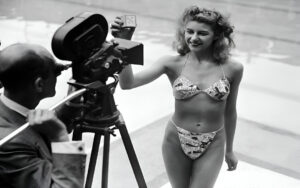
Reard printed advertisements on 5th July 1946 with Bernardini as the model at the Piscine Molitor. The bikini was an instant hit, especially among men, and Bernardini received some 50,000 fan letters.
In 1946, Western Europeans greeted the first war-free summer in years, and French designers came up with fashions to match the liberated mood of their people. French designers, Jacques Heim and Louis Reard, developed competing prototypes of the bikini. Heim called this the “atom” and advertised it as “the world’s smallest bathing suit.” Made out of a just 30 inches of fabric, Reard promoted his creation as “smaller than the world’s smallest bathing suit.”
French women welcomed the design but the Catholic Church, some media, and a majority of the public thought the design was scandalous. Contestants in the first Miss World Beauty Pageant wore them in 1951, but the bikini was then banned from the competition. Actress Brigitte Bardot could draw attention when she was photographed wearing a bikini on the beach during the 1953 Cannes Film Festival. Other actresses, like Rita Hayworth and Ava Gardner received press attention when they wore bikinis. During the early 1960s, the design appeared on the cover of Playboy and Sports Illustrated, giving it additional legitimacy. In 1962 James Bond movie Dr. No, actress Ursula Andress made a huge impact when she emerged from the surf wearing what is now might be called as an iconic bikini. The dear skin bikini worn by Raquel Welch in her film One Million Year BC (1966) made her a global sex symbol and was described as a definitive look of the 1960s.
Going into the History:
Evidence of women’s bikini clothing has been found in as early as 5600 BC. Illustrations of women wearing bikini-like garments during competitive athletic events in the Roman era have been found in several locations, the most famous is at Villa Romana del Castle.
Pre-Roman

In the Chalcolithic era of around 5600 BC, the mother-goddess of Catalhoyuk, a large ancient settlement in southern Anatolia, was depicted astride two leopards while wearing a bikini-like costume. Two-piece garments worn by women for athletic purposes are depicted on Greek urns and paintings dating back to 1400 BC. Ancient Greek women wore a breastband called mastodeton or an apodesmos.

Artwork dating back to the Diocletian period (286–305 AD) in Villa Romana del Casale (Sicily) excavated by Gino Vinicio Gentili in 1950–60, depicts women in garments resembling bikinis in floor mosaics. Images of ten women, dubbed the “Bikini Girls”, exercising in clothing that would pass as bikinis today, are the most replicated mosaic among the 37 million colored tiles at the site. In the artwork “Coronation of the Winner” of floor mosaic in the Chamber of the Ten Maidens (Sala delle Dieci Ragazze in Italian) the bikini girls are depicted weight-lifting, discus throwing, and running. Some activities depicted have been described as dancing, as their bodies resemble dancers rather than athletes.
Some academics maintain that the nearby image of Eros, the primordial God of Lust, Love, and Intercourse, was added later, demonstrating bikini with the erotic. Similar mosaics were discovered in Tellaro in northern Italy and Patti, another part of Sicily. Images of Roman female sex workers were found wearing costumes similar to the Bikini Girls.
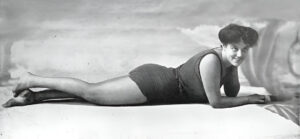
In 1907, Australian swimmer Annette Kellermann was arrested on Boston beach for wearing a form-fitting sleeveless one-piece knitted swimming tights that covered her from neck to toe, a costume she adopted from England, although it became accepted swimsuit attire for women in parts of Europe by 1910. Even in 1943, pictures of the Kellerman swimsuit were produced as evidence of indecency in Esquire v. Walker, Postmaster General. Harper’s Bazaar published in June 1920 (vol. 55, no. 6, p. 138) – “Annette Kellerman Bathing Attire is distinguished by an incomparable, daring beauty of fit that always remains refined.” The following year, in June 1921 (vol. 54, no. 2504, p. 101) it wrote that these bathing suits were “famous … for their perfect fit and exquisite, plastic beauty of line.”
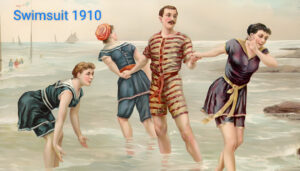
1912 summer Olympics introduced female swimming. In 1913, inspired by that breakthrough, designer Carl Jantzen made the first functional two-piece swimwear, a close-fitting one-piece with shorts on the bottom and short sleeves on top. 1912 silent film “The Water Nymph” saw Mabel Normand in revealing attire, and this was followed in “Sennett Bathing Beauties” (1915–1929). In 1915, the word “swimsuit” was coined by Jantzen Knitting Mills, a sweater manufacturer who launched the Red Diving Girl swimwear brand. In 1916, the first annual bathing suit day at New York’s Madison Square Garden became a landmark. The swimsuit apron, a design for early swimwear, disappeared by 1918, leaving a tunic covering the shorts.
During the 1920s and 1930s, people began to shift from “taking in the water” to “taking in the sun”, and swimsuit designs shifted to more decorative features. The 1929 film “Man with a Movie Camera” shows Russian women wearing early two-piece swimsuits exposing their midriff, and a few who are topless. Actress Dolores del Rio was the first major star to wear a two-piece women’s bathing suit onscreen in “Flying Down to Rio” (1933).
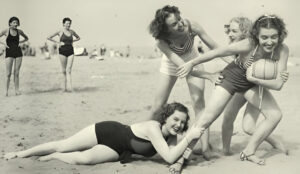
In the 1930s, the European women first began wearing the two-piece bathing suits that consisted of a halter top and shorts. During World War, in Europe, fortified coastlines and Allied invasions curtailed beach life during the war, and swimsuit development, like everything else non-military, came to a standstill.
The 1934 film “Fashions of 1934” featured chorus girls wearing two-piece modern bikinis. In 1934, a National Recreation Association study on the use of leisure time found that swimming, encouraged by the freedom of movement the new swimwear designs provided, was second only to movies in popularity as free time activity out of a list of 94 activities. In 1935 American designer Claire McCardell cut out the side panels of a maillot-style bathing suit, the bikini’s forerunner. The 1938 invention of the Telescopic Watersuit in shirred elastic cotton ushered into the end the era of wool. Cotton sun-tops, printed with palm trees, and silk or rayon pyjamas, usually with a blouse top, became popular by 1939.
Wartime production during World War II required vast amounts of cotton, silk, nylon, wool, leather, and rubber. Fabric shortage continued for some time after the end of the war. In 1942 the United States issued Regulation L-85, cutting the use of natural fibers in clothing, and mandating a 10% reduction in the amount of fabric in women’s beachwear. To comply with the regulations, swimsuit manufacturers produced two-piece suits with bare midriffs. And by that time, two-piece swimsuits were frequent on American beaches In the summer of 1941 Rita Hayworth featured on the cover of Life magazine (1941) sitting on the beach in a white two-piece with a bared midriff although her navel remained covered.
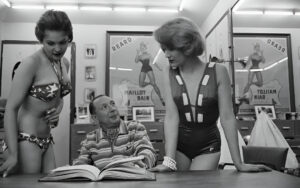
Following the trend, on 5th July 1946, the French designer Louis Reard launched a two-piece swimsuit at the Paris Piscine Molitor swimming pool. Its name “bikini” was taken from the US atomic test off the Bikini Atoll in the Pacific Ocean earlier that week.
In America, the bikini was not so socially accepted until the early 1960s, when a new emphasis on youthful liberation brought the swimsuit en masse to U.S. beaches. It was immortalized by the pop singer Brian Hyland, who sang “Itsy Bitsy Teenie Weenie Yellow Polka-Dot Bikini” in 1960. However, bikini gradually grew to gain wide acceptance in the western society. According to French fashion historian Olivier Saillard, the bikini is perhaps the most popular type of female beachwear around the globe because of “the power of women, and not the power of fashion”. As he explains, “The emancipation of swimwear has always been linked to the emancipation of women”. By the early 2000s, bikinis made US$811 million business annually.

Thus, the world’s shortest fashion costume had to go through so many changes of its concepts and designs.
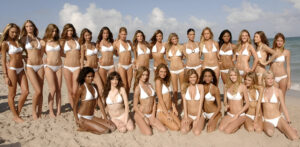
(Source : HCC, HTC, Encyc.com).
http://lolawho.com/bikini-day-jacques-heim-and-louis-reard/
http://www.history.com/this-day-in-history/bikini-introduced
*******

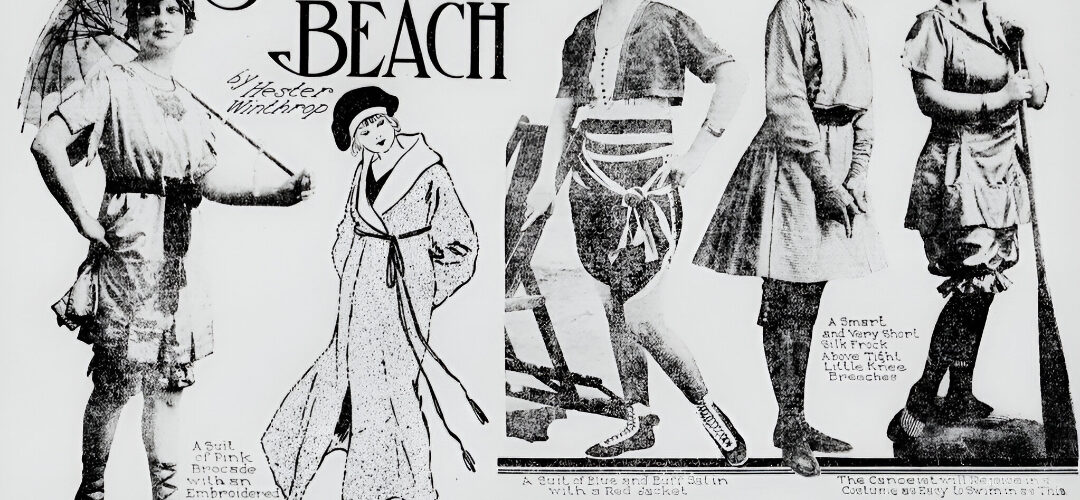













Fascinating story of swimsuit. Now it is known why it is called Bikini.
I have a question, author.
Why it’s bikini for the women, and swimwear for the men?
আধুনিক সুইম স্যুট থেকে বিকিনি এই পরিবর্তন এসেছে বিগত প্রায় ১০০ বছরে। এর আগেও ছিল, তবে মনে খোলা জায়গায় স্নানের সময়ের জন্য নয়। আর এই পরিবর্তনের জন্য হাজার নতুন ডিজাইন এসেই আবার পুরনো হয়ে গেছে। আগের বিকিনি এখন স্বল্পবসনাদের মডেলিং এর জন্য, যে উদ্দ্যেশ্যে এগুলোর উদ্ভাবন হয় নি।
কঠিন বিষয়, লেখক চেষ্টা করেছেন , কৃতিত্বের জন্য দাবি রাখেন।
Woh! Bikini or the two piece swim suit and the story of its birth in an island, is a huge revelation to me.
Mr. দেব also provided photographs of Bikini like female wear in pre- Roman age.
Good research!
But the cherry on the cake is the line that tells us about the Bikini being instant hit among the men folks.
The speciality of the author Sri Asim Deb is about the range of subjects he explores into and the meticulous standard of research work he undertakes on those subjects.
It is surprising to know that the two-piece outfits were worn by greek women for athletic purposes in BC era, dating back to 1400 BC !! Presumably the fact explain the evolution of that garment to present day sensation called Bikini. The writing is full of such astounding facts from the beginning to end.
However, the amazing part of the research work of the author is in the concluding part:
world’s shortest fashion costume brings a huge fortune to its producers/ sellers – as big as USD 811 million every year.
Thanks PK, for such wonderful and encouraging feedback. I write on various subjects just because of passion, and readers like you. You liked it, that’s my prize.
There are actually two topics merged together in this article. The first one deals with the evolution of female swimwear from the early 20th century culminating in the two piece bikini made popular by actresses like Brigit Bardot, Ava Gardener and Ursula Andress. But far more interesting to me is the revelation that almost similar costumes existed from the prehistoric days and then used by the women of the Roman era, though for different purpose. I marvel at the amount of research that the author had to do to bring out this article. One admission though, I thought people call it bikini because it is a two piece wear. Now learnt that it is named after the bikini atoll of Pacific place for nuclear testing.
গ্রীক রোমানদের সময়ের একটা কস্টিউম এর আইডিয়া নিয়ে কি বিশাল এক ব্যবসা ফেঁদে বসলেন। সাথে মার্কেটিং। বাজারে এল বিকিনি।
লোকে ভুলেই গেল যে দু হাজার বছর আগেও স্বল্প বাস ছিল, তবে অন্য কারণে।
একেই বলে মার্কেটিং।
The concept of bikini was one of the most important and successful thought of that time when our European woman were looking for new clothes, be formal, or casual. The name ‘bikini’ itself was a masterstroke.
Simply it was a historical costume, made to fit in the contemporary society with a attractive name.
The article is good, giving the chronology of its changes with time.
A nice article that describes the chronology of a most simple costume. In Christian history, there are references of short dresses, but those were indoor and meant for a class of female workers.
The same concept is used here for the free society, down under the open sky, and then converted to a billion dollar business.
Great thoughts.
Good to read and know the history.
Pictorial illustrations helped in better understanding of the chronology.
Being a woman, we are historically crazy about new fashions, new designs. And any new fashion means new business. That’s exactly the man did. He could sense the future market, launched a new fashion. Earlier it was one piece suit, he made it miniature two piece.
Rest is history.
The word Bikini itself is a curiosity for me, though I know I hve nothing to do with it. It’s a female costume. It is interesting to know that evidence of such style of women’s clothing has been found as early as 5000 BC, and the author could trace its history back to that era, including that it was an athletic uniform in Roman Era.
Author has described nicely the chronological changes in designs and utility, ultimately spilitting the one piece suit to two separate two-piece swim suit. And, finally one French gentleman made it a commercial merchandise.
So much to know, even about the world’s smallest dress item!!!The word Bikini itself is a curiosity for me, though I know I hve nothing to do with it. It’s a female costume. It is interesting to know that evidence of such style of women’s clothing has been found as early as 5000 BC, and the author could trace its history back to that era, including that it was an athletic uniform in Roman Era.
Author has described nicely the chronological changes in designs and utility, ultimately spilitting the one piece suit to two separate two-piece swim suit. And, finally one French gentleman made it a commercial merchandise.
So much to know, even about the world’s smallest dress item!!!
For testing
The article title itself is interesting, creates curiosity. My concept of bikini was the shots of Hollywood and to some extent Bollywood movies. That’s what I could know or I could guess about it.
Today I understand that even two thousand years back there was bikini but for different purposes.
What a change in our lifestyle with change of time !!!
Nice to read.
It’s interesting to know that what we wear is not a recent costume but dates back to Roman era, only the application was different. Author has beautifully narrated it’s timeline how the concept of costume changed from old traditions to the present hot size, which is slightly thicker than few threads.
Thanks.
The said item belongs to the women’s world. But I find it worth reading to know the historical changes from far old days to the present invention.
Nice compilation, worth reading.
This is called innovation, resulting to a business idea.
The 2000 years old court costume was re-looked with an innovative interest during the WW2, one gentleman brandied it with an interesting name, launched a new fashion which was a simple but well thought modification of ancient design.
Rest is history.
My God, what a change!!
What was a costume of respect about 2000 years back are now made into a piece of shortest threads and now sold on street footpaths!!
I doubt if at all those traditional costumes are used anymore. May be a few are kept in museums.
Traditional practices won’t survive in today’s business greed, they would bring what not in the name of fashion.
Thank you Asim, your radar picked up another interesting topic – in the form of Bikini.
Transformation from Roman days to recent days via Greek era is like a revolution, which you analysed and opened up nicely in sequential order. Kudos to your research works on various subjects in recent days relentlessly.
You have made the item, which is ‘the world’s smallest bathing suit’, made out of 30 inch of fabric, even ‘smaller than the smallest bathing suit in the world’, to a large topic for discussion and revelation thereby. Great going.
প্রাচীন আর্য সভ্যতাতে ‘নিভি’ নামে এক ধরণের অন্তর্বাস পরিধান করা হতো। নিভি হলো পোশাকের প্রথম স্তর, যার উপরে পরিধান বা বস্ত্র এবং অধিবাস বা উপরের পোশাক পরা হতো। পুরুষ ও নারী উভয়ই এই পোশাক ব্যবহার করতেন এবং অলংকার হিসেবে সোনা ও অন্যান্য ধাতু ব্যবহার করতেন।
ভালো তথ্য সমৃদ্ধ লেখা।
বাংলা সিনেমা নাটকের মিস শেফালি মনে পড়ে? ৭০ দশকে ববি সিনেমায় ডিম্পল কাপাডিয়া?
প্রাচীন ভারতীয় ইতিহাসেও স্বলবাস পরিহিতা নর্তকীদের উল্লেখ রয়েছে। তাঁরা প্রধানত রাজ্যসভায় খাস অতিথিদের সামনেই নৃত্য পরিবেশন করতেন।
যদিও বিদেশে অনেক আগেই বিকিনির প্রচলন শুরু হয়েছে, আমাদের দেশে আম জনতার কাছে মেয়েদের স্বল্পবাস চেতনা বাসা বেঁধেছে হিন্দি সিনেমার হেলেনের দৌলতে। তারপর অনেকেই হেলেনের পদাঙ্ক অনুসরন করেছেন।
তবে আজকের বিকিনি আরও ছোট হয়ে গেলে সামাজিক সমস্যা আর সামলানো যাবে না।
I first experienced to see a bikini clad heroine in a hindi film “An evening in Paris” . Sharmila Tagoe wore the bikini in a film song based on a water game.
Historically we learn many things from Roman & European history. I just imagining women partcipating in sports wearing bikini like short wear in BC period . It is amazing . Most of modern science and geographic invention and discovery came from European continent.
Thank you for writing such subject which was unknown to us. Keep writing.
Short costumes were always there, there would be enough historical evidences. This Bikini is the result of modernization of costume to short size, then mini size then ultra mini size, God bless the designers that please put a full stop. Else fashion would change from swimming with bikini or no-bikini.